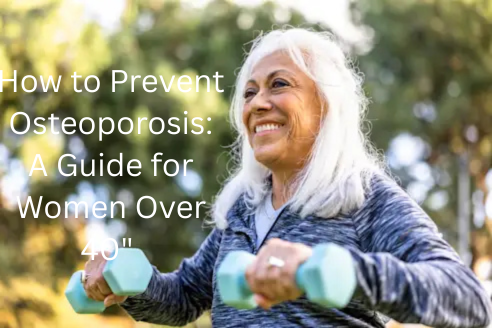Explore how menopause can influence COPD symptoms in women, including hormonal changes, lung health, and effective management strategies.
Chronic Obstructive Pulmonary Disease (COPD) is a long-term respiratory condition that affects the lungs, making it difficult to breathe. While it has traditionally been associated with men, recent studies show that more women are being diagnosed — particularly those going through or after menopause. The intersection between menopause and COPD is a critical but often overlooked aspect of women’s health. Hormonal fluctuations during this period can significantly impact lung function, inflammation, and symptom severity.
Understanding how menopause affects COPD can help women take proactive steps to manage their respiratory health effectively. This article explores the link between hormonal changes and lung health, how symptoms evolve, and practical strategies for prevention and management.
Understanding COPD in Women
COPD is a progressive lung condition that includes chronic bronchitis and emphysema. It limits airflow due to inflammation and damage to lung tissue. Common causes include smoking, long-term exposure to air pollutants, and genetic factors such as alpha-1 antitrypsin deficiency.
Women may experience COPD differently than men. Research shows that female lungs are smaller, and their airways are more sensitive to toxins, making them more vulnerable even at lower levels of exposure. Symptoms of COPD include chronic cough, wheezing, shortness of breath, and fatigue. In women, these symptoms often begin earlier and progress faster.
The Connection Between Menopause and COPD
Menopause marks the end of a woman’s reproductive years and brings significant hormonal changes, particularly a decline in estrogen and progesterone. These hormones are not only vital for reproductive health but also play roles in maintaining the respiratory and immune systems.
How Menopause Affects COPD:
-
Decline in Estrogen:
Estrogen helps regulate inflammation in the lungs. When levels drop, the airways can become more inflamed and reactive, worsening COPD symptoms. -
Changes in Immune Function:
Hormonal shifts may weaken the immune system, making women more susceptible to respiratory infections, which are a leading cause of COPD flare-ups. -
Bone Health and Posture:
Menopause also increases the risk of osteoporosis. Weakened bones can affect posture and the chest cavity’s shape, indirectly impacting breathing efficiency. -
Weight Gain and Metabolic Changes:
Metabolic slowdown during menopause can lead to weight gain, which places additional pressure on the lungs and diaphragm, worsening breathlessness.
Symptoms to Watch For
Recognizing COPD symptoms during menopause is vital for early management.
Common signs include:
-
Persistent cough with mucus production
-
Wheezing or chest tightness
-
Shortness of breath, especially during physical activity
-
Fatigue or lack of energy
-
Frequent respiratory infections
Women in menopause may also experience overlapping symptoms like hot flashes, sleep disturbances, and anxiety, which can complicate COPD diagnosis. Therefore, regular lung function tests are essential to differentiate between menopause-related changes and respiratory decline.
Managing COPD During and After Menopause
Although COPD cannot be cured, managing its symptoms effectively can significantly improve quality of life.
1. Medical Treatments
-
Bronchodilators: Help open airways and ease breathing.
-
Inhaled Corticosteroids: Reduce inflammation in the lungs.
-
Hormone Replacement Therapy (HRT): Some studies suggest that estrogen replacement may improve lung function in postmenopausal women, though this should be discussed with a doctor due to potential side effects.
2. Lifestyle Adjustments
-
Quit Smoking: This is the single most important step to slow disease progression.
-
Exercise Regularly: Low-impact exercises such as yoga, walking, or swimming improve lung capacity and overall fitness.
-
Maintain a Healthy Weight: Balanced nutrition supports better respiratory health and reduces stress on the lungs.
-
Avoid Triggers: Limit exposure to pollution, dust, and strong odors.
Also check: The Impact of Smoking on Women’s Reproductive Health.
3. Diet and Nutrition
A diet rich in antioxidants (vitamin C, E, and beta-carotene) supports lung health. Omega-3 fatty acids found in fish and flaxseeds can help reduce inflammation.
Staying hydrated also keeps mucus thin and easier to expel.
4. Mental Health Support
Managing COPD can be emotionally taxing. Incorporating relaxation techniques, mindfulness, or therapy can help alleviate anxiety and improve mental well-being during menopause.
Prevention and Long-Term Care
Preventive measures are essential for minimizing COPD flare-ups and preserving lung health:
-
Regular Check-ups: Schedule annual lung function tests and discuss hormonal changes with your healthcare provider.
-
Vaccinations: Flu and pneumonia vaccines reduce infection risk.
-
Air Quality Awareness: Use air purifiers indoors and check outdoor air quality before exercising.
-
Medication Adherence: Take prescribed treatments consistently.
-
Pulmonary Rehabilitation: These programs teach breathing exercises and self-management strategies that enhance lung efficiency.
FAQs About COPD and Menopause
1. Does menopause make COPD worse?
Yes, hormonal changes during menopause, particularly reduced estrogen levels, can exacerbate inflammation and breathing difficulties in women with COPD.
2. Can hormone replacement therapy help with COPD?
Some research suggests that HRT may have a protective effect on lung function, but it carries potential risks. Always consult your doctor before starting any hormonal treatment.
3. What is the best exercise for women with COPD?
Gentle aerobic exercises such as walking, cycling, and water aerobics are beneficial. Breathing exercises like pursed-lip breathing can also help manage symptoms.
4. How can I tell if my shortness of breath is due to menopause or COPD?
While menopause can cause fatigue and anxiety, persistent shortness of breath or wheezing may indicate COPD. Lung function tests are necessary for accurate diagnosis.
Conclusion
The relationship between COPD and menopause is complex but manageable with awareness and proactive care. Understanding how hormonal changes influence respiratory health empowers women to make informed lifestyle and medical choices. By combining medical treatment, healthy habits, and emotional support, women can effectively control COPD symptoms and enhance their overall well-being during and after menopause.


